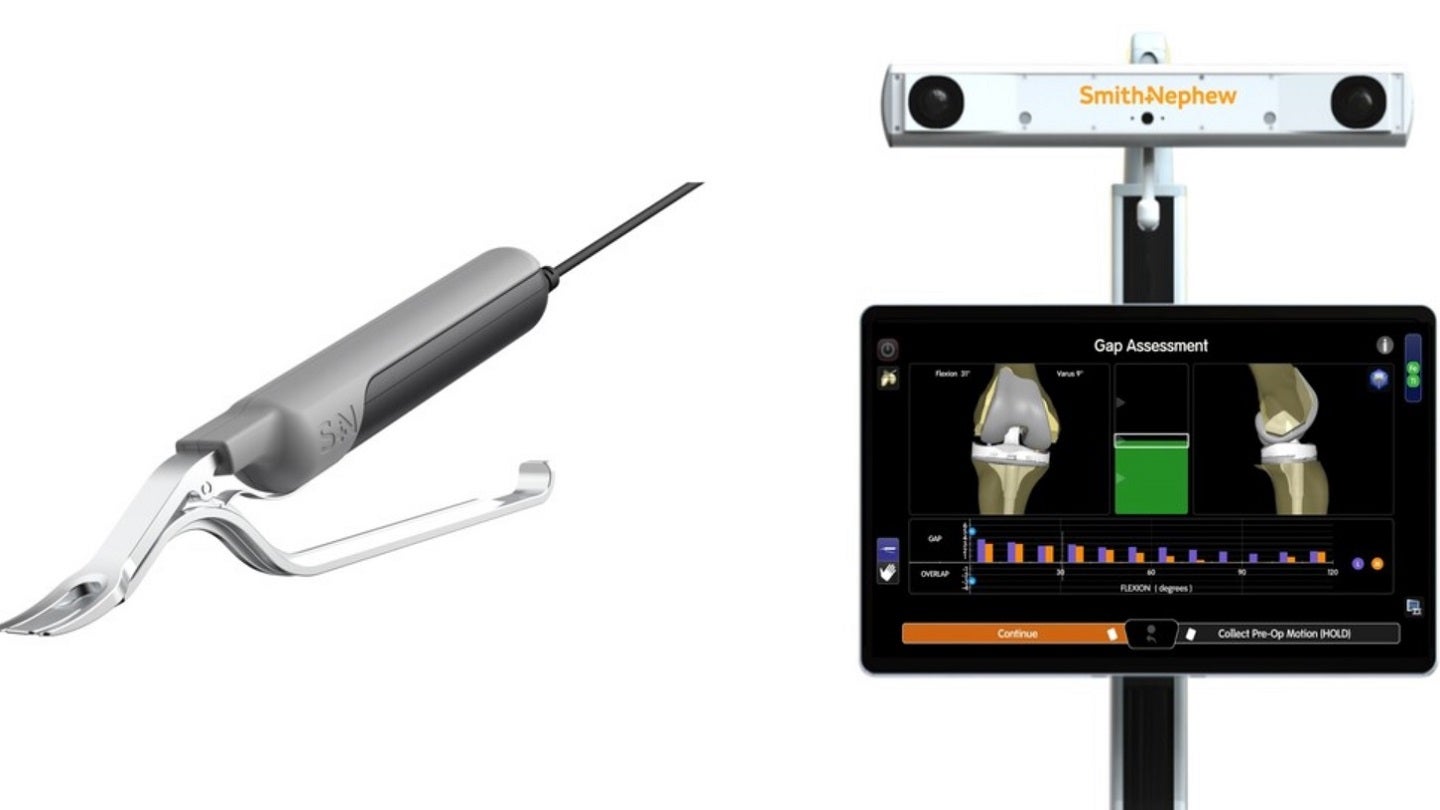
Smith+Nephew has launched a new handheld digital tensioning device, known as the CORIDigital Tensioner, for robotically enabled total knee arthroplasty.
Surgeons can use the device, which is claimed to be a first-of-its-kind, for the measurement of ligament tension in a knee before cutting bone.

Discover B2B Marketing That Performs
Combine business intelligence and editorial excellence to reach engaged professionals across 36 leading media platforms.
Dr Bertrand Kaper from the HONORHEALTH Medical Group and Orthopedic Specialists of Scottsdale carried out the first commercial surgery using the CORI Digital Tensioner.
Kaper said: “The integration of this dedicated soft tissue tensioning device brings a new realm of objective data to the technique of knee replacement.
“The surgeon is now able to collect joint laxity data in a proactive manner to assist with the visualisation, planning and execution of the patient’s surgery in real-time.”
The device assists in reducing variability when balancing the knee in surgery by allowing the surgeon to quantify joint laxity in the native knee and achieve an ideal ligament tensioning force.

US Tariffs are shifting - will you react or anticipate?
Don’t let policy changes catch you off guard. Stay proactive with real-time data and expert analysis.
By GlobalDataIt generates a force that is determined by the surgeon to distract the knee joint, maintain a consistent tension in the ligaments and offer objective gap information to assist with the planning and execution of the surgical procedure.
The software interface incorporated in the device facilitates surgeons to select their desired target force value. It also automates gap data collection at a specified force through the full range of movement.
According to a small clinical case series, the device was found to decrease tensioning variability by 64% compared to a manual technique.
Earlier this month, Smith+Nephew entered an exclusive agreement with Navbit to distribute the latter’s disposable navigation device in Japan.



